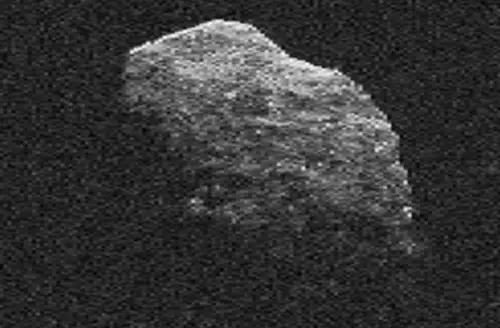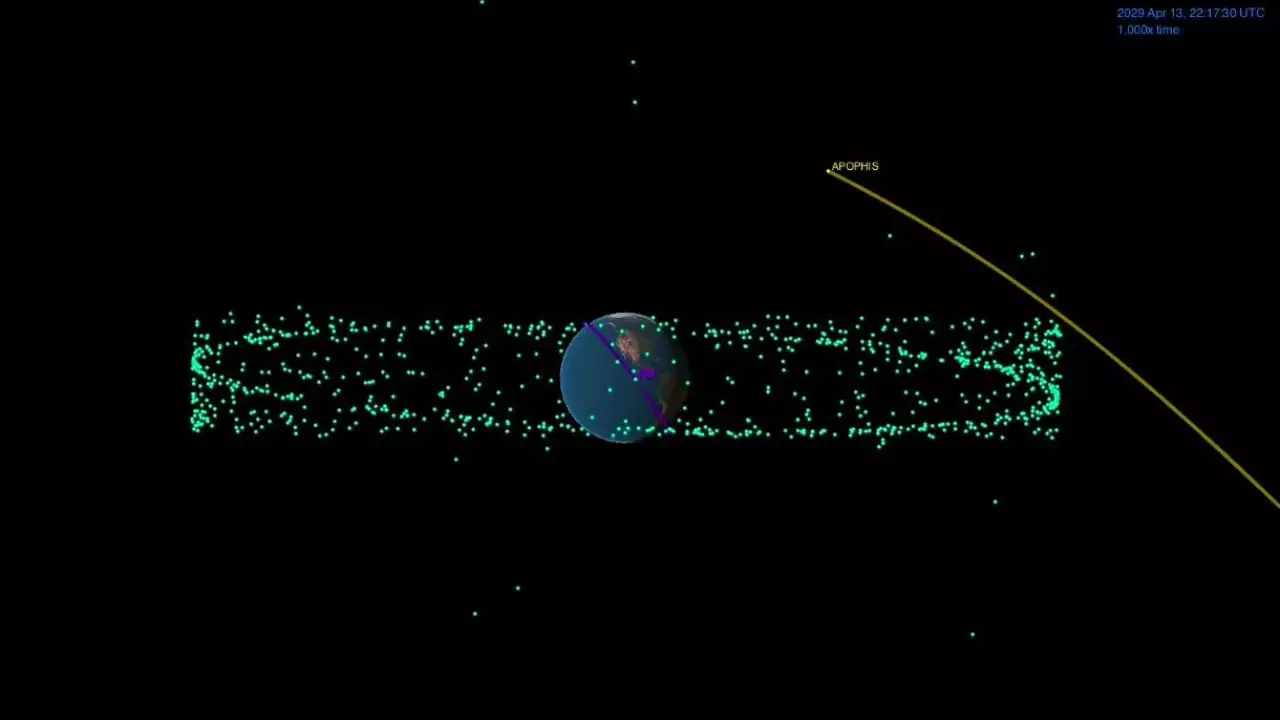
A huge asteroid named after the Ancient Egyptian God of Chaos will be visible this week as it passes by Earth - at a safe distance, don't worry.
The space rock Apophis will come within 10,471,577 miles of Earth, zooming past us just after 1am on Saturday morning (6 March).
Advert
For anyone worried about the chance of collision, it will fly past at about 43 times the distance from our planet to the moon... so not quite Armageddon territory just yet, thankfully.
But while Apophis won't come dangerously close to Earth, it will be visible to telescopes, and will also be within radar range.
"With a high-end telescope you can watch it as it safely whizzes by our planet," Space.com advises, referring to Apophis as 'our solar system's most infamous asteroid'.
For those wanting to see the asteroid without any high-tech telescopes, the European Virtual Telescope Project will be hosting a live online feed as the fly-by happens.
Advert

The 'near-Earth' asteroid was first discovered in 2004 by astronomers Roy Tucker, David Tholen and Fabrizio Bernardi at the Kitt Peak National Observatory in Tucson, Arizona.
It measures 1,120 feet (340 metres) wide, which is the equivalent of three-and-a-half football fields, and has been classified as a 'Potentially Hazardous Asteroid' by the International Astronomical Union's Minor Planet Centre.
Advert
Experts at NASA's Goldstone Deep Space Communications Complex in California have been observing the asteroid since 3 March, and will continue watching until 14 March.
It's due to pass Earth again in April 2029, when it will come much closer to our planet - meaning it should even be visible to the naked eye.
Scientists initially feared it would strike Earth that year thanks to initial calculations, but NASA has fortunately since ruled out the possibility of a '2029 impact'.

On its Solar System Exploration site, NASA explains: "After searching through some older astronomical images, scientists ruled out the possibility of a 2029 impact. It's now predicted the asteroid will safely pass about 19,800 miles (31,900 kilometers) from our planet's surface.
Advert
"While that's a safe distance, it's close enough that the asteroid will come between Earth and our Moon, which is about 238,855 miles (384,400 kilometers) away. It's also within the distance that some spacecraft orbit Earth."
Marina Brozović - a radar scientist at NASA's Jet Propulsion Laboratory in Pasadena, California, who works on radar observations of near-Earth objects (NEOs) - adds: "The Apophis close approach in 2029 will be an incredible opportunity for science.
"We'll observe the asteroid with both optical and radar telescopes. With radar observations, we might be able to see surface details that are only a few meters in size."
Featured Image Credit: NASA/JPLTopics: World News, News, Nasa, space, Asteroid